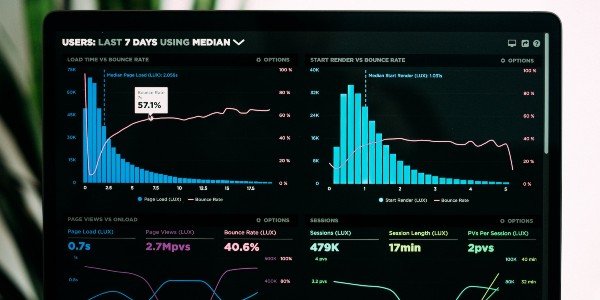eCommerce is a fast-paced, ever-growing industry. Recent estimates predict that global eCommerce retail will eclipse $8,000 billion by 2026, as more people gain access to the web and global supply chains become increasingly efficient.
However, actually finding success online can be tricky. eCommerce is extremely competitive, and you may find it hard to capture the attention of an audience when trying to sell online.
Fortunately, you don’t have to spend decades networking and schmoozing with their investors. You can use the tech behind eCommerce stores to drive traffic to your site and improve your ranking on Google. Even simple changes, like improving your load speed and incorporating voice search features, can make a big difference to your ranking on search engines.
Understanding Google Ranking
If you’re new to search engine optimization (SEO), you may be a little confused by terms like “crawling”, “anchor text”, and “sitemaps”. This is entirely understandable, as SEO management has a steep learning curve for the uninitiated.
You can begin your journey towards SEO optimization by understanding the tech behind your eCommerce store. This will help you appear higher on Search Engine Results Pages (SERPs) like Google and Bing when consumers search for a product you sell. For example, Google ranks websites based on factors like:
- Keyword Optimization: SERPs like Google look for keywords and their synonyms when crawling the web in search of relevant results. This means you need to conduct some keyword research when writing blog posts and articles, as this will guide your content creation.
- Internal Links: Google uses internal links to crawl your content and assess your site. A robust internal linking strategy can help keep consumers on your site, too, as folks are more likely to stay on your website if they have new content to consume.
- Page Speed: Slow-loading pages will turn traffic away from your site. This is a real issue on eCommerce sites, as you want to put minimal barriers between consumers and your point of sale.
Other factors, like mobile optimization and content updates, can also boost your SEO ranking. However, if you’re new to the Google game, it’s worth starting with a keyword research strategy and a backlinking program. This will slowly build the authority of your site and help you climb the Google ladder.
Improving Load Speed
Slow-loading pages present a serious risk to the long-term success of your eCommerce site. Folks won’t hang around to see your site if it takes 10 seconds to load, and your bounce rate will go through the roof if you insist on embedding large media files on every page.
Learn how to improve your site’s loading speed by taking an online growth marketing course. Courses like those offered by Udemy will improve your baseline understanding of SEO and will give you the tools you need to speed up your site. You’ll also learn how to better source your products and can learn to take a more holistic approach to store optimization.
If you don’t have time to take an online growth course, you can start improving your load speed by making strategic changes to media files and cookies. Use Google’s PageSpeed tools to keep track of the changes you make and compare your site to other similar web pages.
Glocal SEO
As an eCommerce vendor, you probably don’t have a brick-and-mortar site to sell from. This means you can’t tap into local SEO when designing your marketing campaigns. However, you can use local SEO to boost your rankings and connect with a global audience.
Glocal SEO makes use of the hreflang attribute to help Google identify your region. The hreflang attribute is a clever bit of HTML language code that shows your target region and makes your eCommerce store “local” to folks who search for your product in that area.
Hreflang is also important if you want to sell to an international audience. Hreflang shows Google which language your site is written in so that your content is correctly translated when international visitors come to your page. This is particularly useful if you have recently identified a new region for expansion or have opened up new supply lines and trade routes beyond your current country.
Backlinks
Authoritative backlines play a crucial role in your SEO strategy and eCommerce store optimization. High-quality backlinks will quickly boost your ranking on SERPs and can help you leapfrog the more established competition.
However, before you start paying for shady backlinks, it’s worth bearing in mind that cheating the Google rankings will land you in hot water. Buying backlinks is referred to as “Black Hat” SEO and violates Google’s Webmaster Guidelines. If you’re caught, your website traffic will plummet and your sales will dwindle.
Instead, put meaningful effort into your content creation strategy and link build the right way. Create high-quality content on your site, and reach out to similar organizations to see if they’d be interested in using your blog posts and articles. This kind of outreach requires you to produce quality content, but will slowly build the authority of your site.
Eventually, your blog posts will rank Google as an authoritative source of information. This will mean that strangers on the web will start linking to your site naturally, as you’ll be considered a trustworthy source of information on the internet. This may take some time, but will organically grow your site traffic and boost your SERP ranking.
Conclusion
The success of your eCommerce site is directly tied to your Google ranking. Effective SEO strategies — like link building and Glocal SEO — can help you rise through the ranks and increase the traffic on your site. You’ll also need to master the basics, like improving load speed, if you want to optimize your eCommerce store. It may take some time to get to grips with SEO techniques and digital marketing, but optimizing your site is almost certain to generate higher traffic and improved profits.


